inside...
* Teacher shares highlights from global expeditions
* Grumpelstiltskin’s Fiber Mill transforms alpaca fibers into yarn
* Artist brings miniature board gaming pieces to vivid life
* Nurses Honor Guard pays tribute to nurses

* Teacher shares highlights from global expeditions
* Grumpelstiltskin’s Fiber Mill transforms alpaca fibers into yarn
* Artist brings miniature board gaming pieces to vivid life
* Nurses Honor Guard pays tribute to nurses
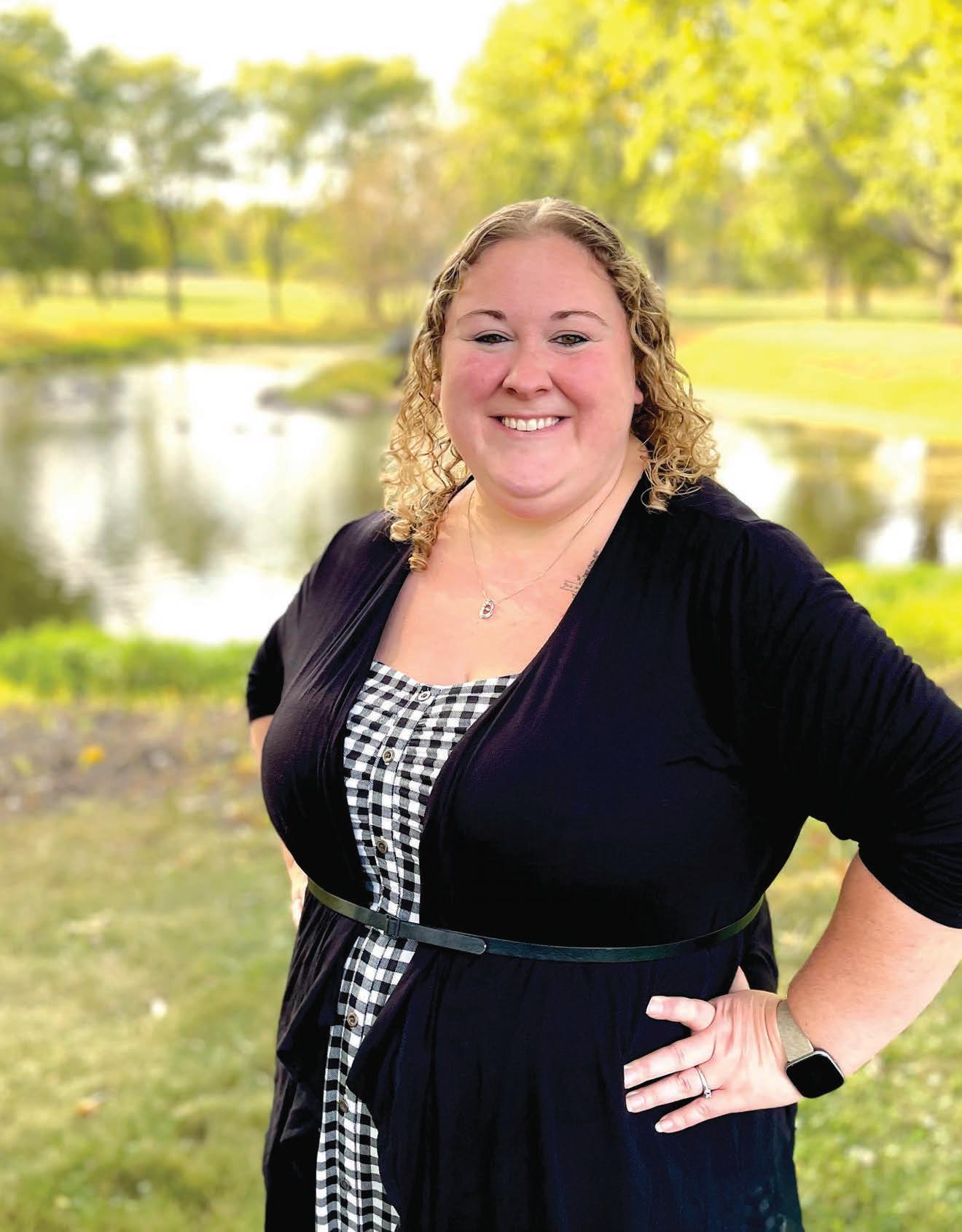







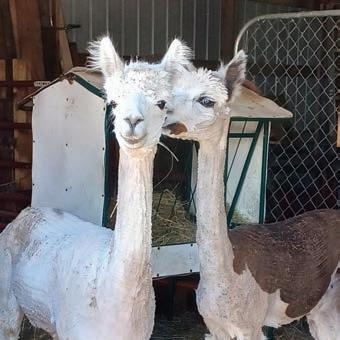

Funeral
Globetrotting
Grumpelstiltskin's
Ar
GROUP PUBLISHER
NEAL RONQUIST
EXECUTIVE EDITOR
RICK LUBBERS
ADVERTISING ACCOUNT EXECUTIVES
ALI CARLSON
KIM QUINONES
SCOTT BLATCHFORD
ALIX CRAFT
LAYOUT AND DESIGN
MOLLIE BURLINGAME
PRODUCTION COORDINATOR
JULIE SCHULZ
CONTRIBUTORS
AMY CARLSON
ANDREA BUSCHE
ANSLEY PIERCE
ELLE FIRESPRAY
JANNA GOERDT
JED CARLSON
JOSH BREWSTER
KARL VON RABENAU
KELSEY EVANS
KIM QUINONES
KIMBERLY BROMAN
KIMBERLY PEDDLE
LUVENA SAICE
MOLLY MILROY
VICKI SURGES
EMAIL CORRESPONDENCE TO: magazines@duluthnews.com
The Woman Today is published by Duluth News Tribune.
Mailed copies available for $32 per year (eight issues). Send check to The Woman Today®, PO Box 16046, Duluth, MN 55816-0046
Larissa Paulson is the funeral director at Sunrise Funeral Home & Cemetery in Hermantown, Minnesota. Photo by Luvena Saice

Hello, Woman Today readers!

Earlier this month, we observed the annual ritual of turning our clocks back an hour with the end of daylight saving time.
How did you spend the extra hour that spring stole from us about eight months ago? I hope you used it wisely. Daylight saving time won’t return until mid-March when we “spring” ahead.
But November is all about “falling back.”
As much as I like getting an extra hour to goof around on an early November Saturday night, it’s a bittersweet tradeoff. There’s more daylight in the morning, but then the sun disappears long before it’s time to trek home from work.
At least that’s the case for most of the country. Residents of Arizona and Hawaii (and folks living in U.S. territories such as Guam, American Samoa, Puerto Rico and the U.S. Virgin Islands) don’t have to worry about springing forward or falling back. Their clocks are locked. But the rest of us moved an hour closer to their time when DST ended.
Several states want to “lock the clock” and not go through this business of setting clocks an hour ahead or back twice a year. I suppose times have changed a bit since World War I when daylight saving time was conjured as a way of saving coal. And we can debate how much energy it saves or sleep it deprives until we have to change our clocks again.
But I’ve always enjoyed the oddity of it. The hour that disappears one month and reappears several months later. Maybe I’m easily amused.
For the record, I used my extra hour for Netflix binge-watching.
While you’re adjusting to all that extra darkness, flip on your reading light and check out this month’s The Woman Today.
Here are some of the stories we’re excited to share with you in this issue:
• You’ll visit Grumpelstiltskin’s Fiber Mill in Culver, Minnesota, and its owner Kelsey Evans, who processes alpaca, llama and camel fibers that customers send to her from across the country.
• Check out the fascinating world of board game miniatures and how artist Elle FireSpray brings those gray figures to life with vivid colors from her brushes and paints.
• Learn about the local Nurses Honor Guard and how that group honors nurses who have passed away.
• Catch up with the busy dancers from the Minnesota Ballet, who are preparing for another action-filled season of creative dance and artistic interpretation.
• DIY new ways to enhance your home decor with gold charger plates.
Thanks for spending some of your time reading The Woman Today. Your readership is greatly appreciated.
Rick Lubbers Executive editor, Duluth Media Group

By Andrea Busche Photos by Luvena Saice
Despite the three generations of “cemeterians” who preceded her, Hermantown resident Larissa Paulson never thought she’d work in the funeral business.
Her great-grandfather and grandfather both worked as cemetery groundskeepers. Her father purchased Sunrise Funeral Home & Cemetery in 2005, and has grown it into a strong and successful enterprise. So it would

make sense for her to join the family business, too.
But when her dad asked if she wanted to go to school for mortuary science, her answer was firm: “Absolutely not. That is so creepy.” She ultimately came around, though, and now finds deep meaning in her work as a mortician.
“The way the funeral industry was depicted in ’90s movies like ‘My Girl,’ I always thought it was this really creepy, macabre job that only weirdos do,” Paulson said with a chuckle. “And

most people only think of old, white men being in this role. But today it’s such a varied group of people who do this work. We’re all so different. It’s really changing.”
In fact, Paulson shared a statistic that over 50% of students pursuing a mortuary science degree are women. That certainly tracks. Other than her father, Barton “Bart” Porter, who serves as Sunrise’s CEO, the rest of the Sunrise team is composed solely of women.
Paulson and her younger sister, Tayler, grew up in Matthews, North Carolina. Their father, Bart, was a plumber and later installed in-ground pools. Their mother, Cheryl, was a stay-athome mom.
The family relocated to Hermantown in 2005 to be closer to family.
“Minnesota has always felt like my home,” Paulson said. “My parents were both born and raised here, and we always came up for Christmas and spent summers here.”
In 2005, Bart purchased Sunrise, which at that time was just a cemetery. He added the funeral home in 2007.
Paulson initially thought she’d work as a writer and editor, and began her coursework at the College of St. Scholastica, later transferring to Lake Superior College. While in college, she had a part-time job at an assisted living facility. This role would ultimately change the course of her future.
She explained: “One of my favorite residents passed away. I spent time visiting with her family, and we shared stories about her. I also helped with her
after-death care. When the funeral home attendant arrived, he said, ‘Doesn’t your dad own a funeral home?’ Don’t you want to do this?’”
Paulson had an “aha moment” when she realized that the caring and compassionate tasks she was handling with her beloved resident were part of the “funeral industry.” When her dad approached her again about joining the family business, this time she said yes.
“I think I tried to run so far away from it that I just circled right back,” she said.
Paulson earned a bachelor’s degree in mortuary science from the University of Minnesota Twin Cities and became a fully licensed mortician in 2017. It should be noted that the technical title for Paulson’s job is “licensed mortician,” however, Paulson prefers the title “funeral director.” They are often used interchangeably.
“IT’S SUCH A VARIED GROUP OF PEOPLE WHO DO THIS WORK. WE’RE ALL SO DIFFERENT. IT’S REALLY CHANGING.”
- Larissa Paulson



“I
- Larissa Paulson
As a funeral director, every day is different for Paulson.
“I wear lots of different hats, not just day to day, but minute to minute,” she said.
“When I started, I handled pickups/transfers of the decedents, along with embalming. But I soon learned that I prefer to work with the families in the ‘front of house.’ So we now hire others for embalming, casketing and dressings.
“Now, I help families plan the services, which is almost akin to planning an entire wedding in three days — we plan the music, the food, the flowers, arrange the clergy, et cetera. It’s a lot of juggling. I also handle lots of legal paperwork.”
It takes a team to keep a funeral home operating. As noted, Paulson’s father Bart serves as owner/CEO.
Paulson is Sunrise’s only licensed mortician/funeral director.
Additionally, the team includes:
• Joan Crawford, president of the funeral home.
• Kristina Minotte, office administrator.
• Dani Geasley, crematory manager and transfer care specialist.
• Liz Baker, crematory operator, transfer care specialist, and Paulson’s assistant.
• Jennie Parks, funeral associate and transfer care specialist. Paulson believes women are often naturally well-suited to work in this industry.
“Emotions run high in this field. People are devastated. Being female, we often have that maternal instinct that helps with empathy, and handling those high emotions.
“I get a lot of comments that my transfer care specialists are so sweet and caring,” she added. “They do things like taking extra time to allow the families to process the emotional impact of the death.”
Paulson and her husband, Reed, were high school sweethearts and have been married since 2013. Reed works for the University of Minnesota Duluth as a custodial supervisor.
The Paulsons have two children, Peyton, 5, and Liam, 2. And their family includes a dog named Booker, and two cats, Gambit and Rogue.
The Paulson family lives in Hermantown and enjoys being very active together. They love hiking, attending concerts and festivals, and traveling up the North Shore.
Paulson has been working hard on a health and weight loss journey, and has lost 110 pounds in the last year and a half.
“That has been life-changing,” she said. “This is why we’re about to get around so much — I’m now physically able to. I want to be a good example for my kids.”
Running is also on Paulson’s itinerary. Thus far, she has completed a 3K, a 5K, and the Park Point 5-Miler. She hopes to run a marathon.

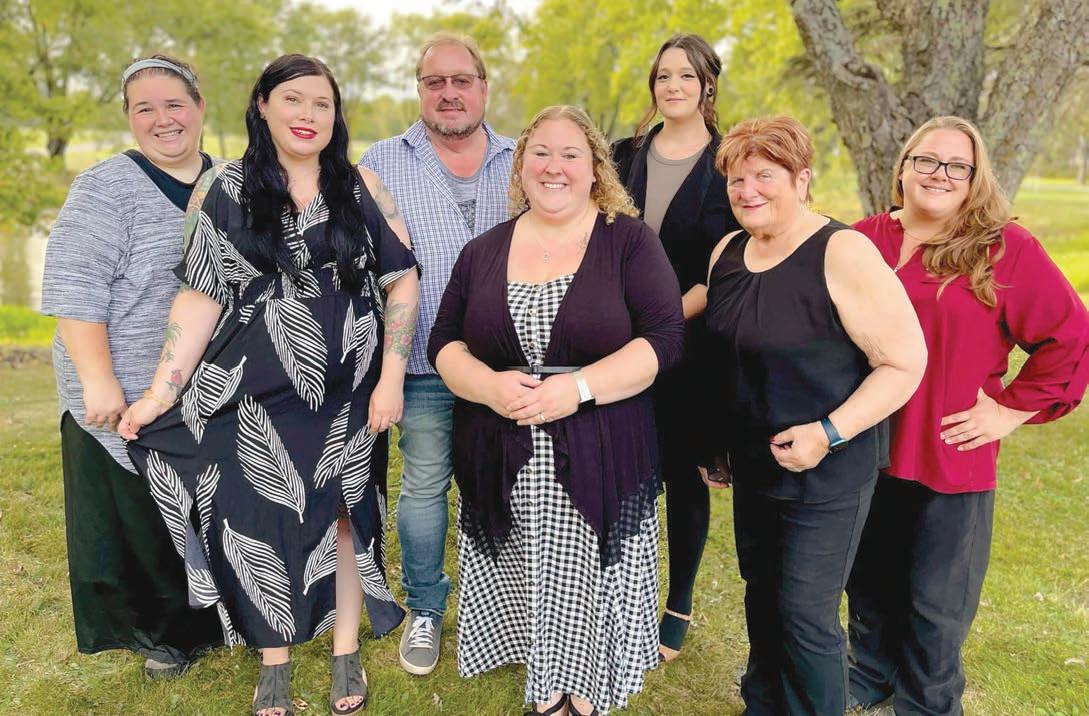
The Sunrise Funeral Home and Crematory staff includes, from left, Kristina Minotte (office administrator), Jennie Parks (funeral associate amd transfer care specialist), Bart Porter (CEO of Sunrise Funeral Home, Cremation Services, and Cemetery), Larissa Paulson (funeral director), Liz Baker (crematory operator, transfer care specialist, and Paulson’s assistant), Joan Crawford (president of Sunrise Funeral Home), and Dani Geasley (crematory manager and transfer care specialist).
Despite once finding the funeral industry “so creepy,” Paulson would now highly recommend a job in this field.
“I enjoy the relationships I develop with families,” she said. “Unfortunately, I do have repeat families. But they know they can always call me and say, ‘I need you,’ and I will be that support for them.”
For others considering a job in mortuary science, she would tell others, particularly women, “Don’t be deterred. Don’t let anyone convince you that you’re any less than. We’re often more capable than we realize.”*
Andrea Busche is a Duluth-based freelance writer and small-business owner. She has been a frequent contributor to The Woman Today since 2008.




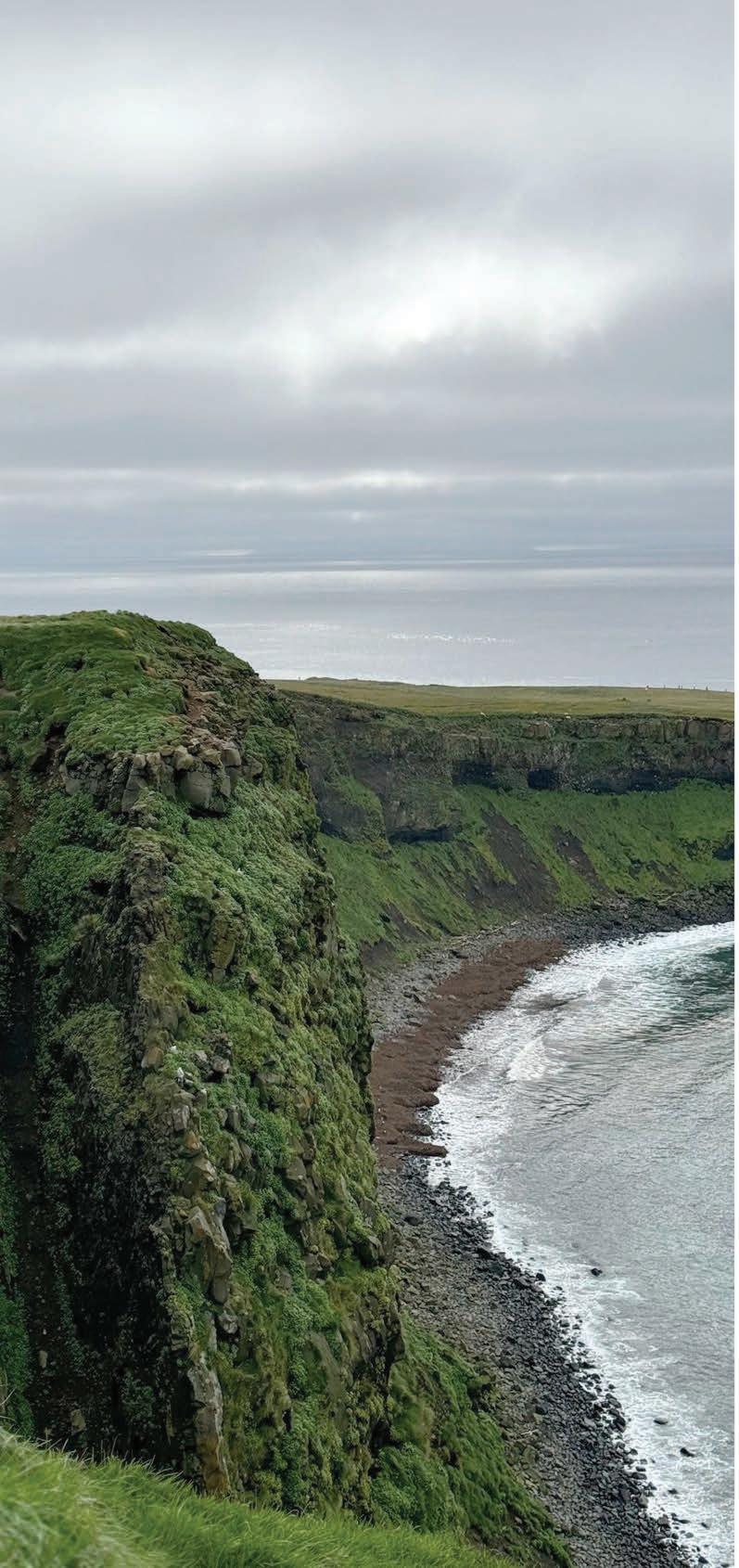
By Andrea Busche
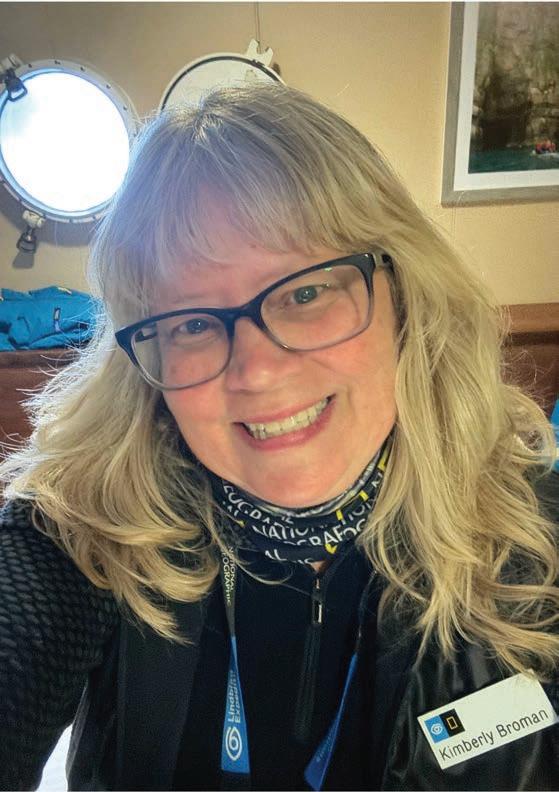
In our August-September issue, we introduced you to second grade teacher Kim Broman. At the time of our writing, Broman was set to embark on two summer adventures — to Costa Rica and Iceland — all in the name of education. Both expeditions were highly competitive professional fellowships, which she was selected for after submitting lengthy applications.
After her exciting summer, Broman has returned safe and sound. She is now back in the classroom and eager to have a great school year with her 22 second graders at Cloquet’s Washington Elementary. The lessons she brought home will be valuable for teacher and students alike.
“They were both life-changing experiences,” Broman said. “I feel restored and renewed, like my cup got filled. And I feel connected to people and the world on a much larger scale.”
From July 9-27, Broman traveled to Costa Rica as part of the Fund for Teachers organization. She learned about sea turtles and sea turtle conservation (her chosen topic of study), along with the culture and history of Costa Rica. She explained some of what she saw and experienced.
“I traveled all over Costa Rica, and did activities related to nature and culture,” she said. “In San Jose, I got to see and learn about the history and historical landmarks.
“I learned traditional ways to make empanadas — both savory and sweet. I got to try tamales made with traditional sauce. And I visited a family who operates a coffee business.
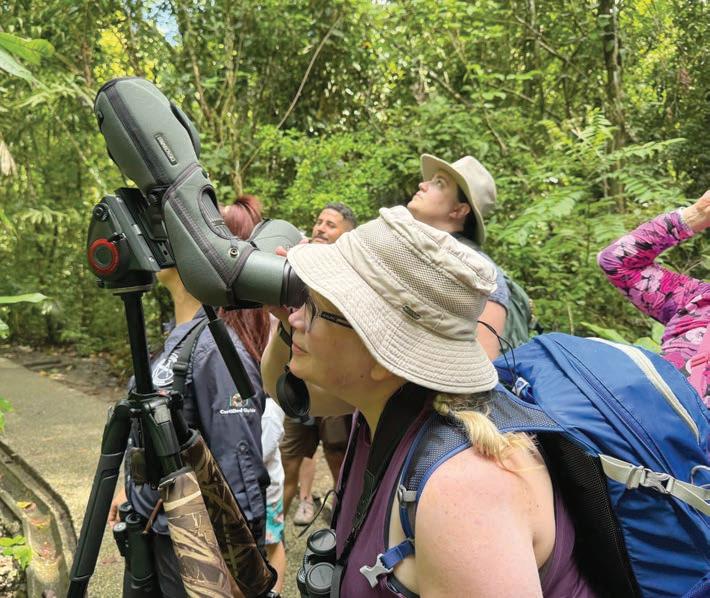








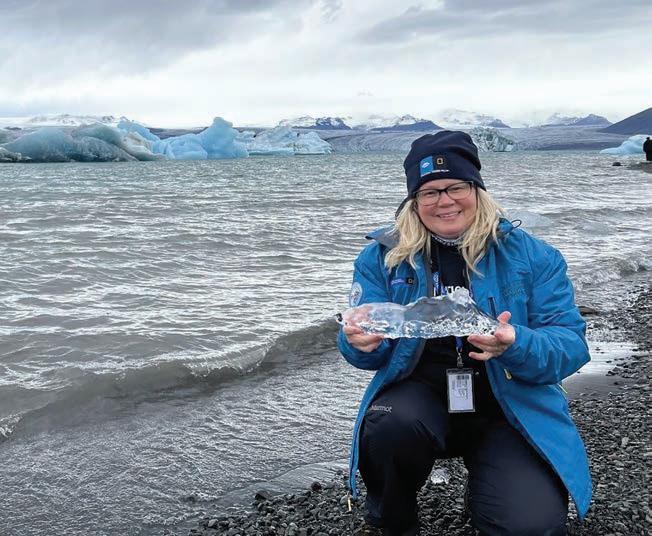
“I also visited many nature reserves. Costa Rica doesn’t have zoos. We took a flashlight boat tour of the mangrove, where we saw snakes, kingfishers and raccoons. The raccoons there have longer legs and are much skinnier than ours. I saw many tropical birds on ‘bird walks’ we took, including toucans, quetzals and scarlet macaws.
“And we visited Tortuguero National Park, in the small village of Tortuguero. You can only get there by boat taxi, which takes an hour and a half. They used to make their living by harvesting sea turtles, but now Tortuguero tries to live in harmony with the sea turtles and is focused on conservation.”
Later, from Aug. 15-24, Broman, along with 35 other educators, completed a circumnavigation of Iceland through a partnership with Lindblad Expeditions and the National Geographic Society. Throughout her expedition, she experienced hands-on, field-based educational and research opportunities, and a once-in-a-lifetime travel experience as one of only two Grosvenor Teacher Fellows on the Iceland trip.
“Going to Iceland was a completely different experience,” Broman explained. “There, we met Felicity Aston, who skied the Antarctic alone, and wrote a book about it, ‘Alone in Antarctica.’ She lives on Vigur Island, off the coast of Iceland. In fact, I met so many people — tour guides, naturalists, social media influencers, travel writers, underwater divers and other educators — that I hope to stay in contact with.
“A really special moment was when we got to see glaciers and the Icelandic ice cap,” she added. “We learned about how, as the water around Iceland is warming, the puffins’ food supply of herring is declining. As a result, the puffins aren’t laying as many eggs. We also got to see an erupting volcano, as the magma was flowing down.”
“Going
Rica.” - Kimberly Broman
Some of the things Broman saw and experienced provided deeply profound life lessons for her.
“Going to Tortuguero and seeing the sea turtles was my main goal for Costa Rica,” she noted. “It was amazing and emotional. I really felt warmth from every person I met.”
Broman was also touched by the experience of watching a mother sea turtle lay and bury her eggs, and seeing how much hard work was involved.
“She laid 100-120 eggs, and only maybe one will survive the predators and poachers.”
In Iceland, she saw something that really touched her heart.
“In a fjord, some school kids had put signs up asking people not to dump garbage so as not to disturb the puffin nesting grounds. It felt like a plea.”



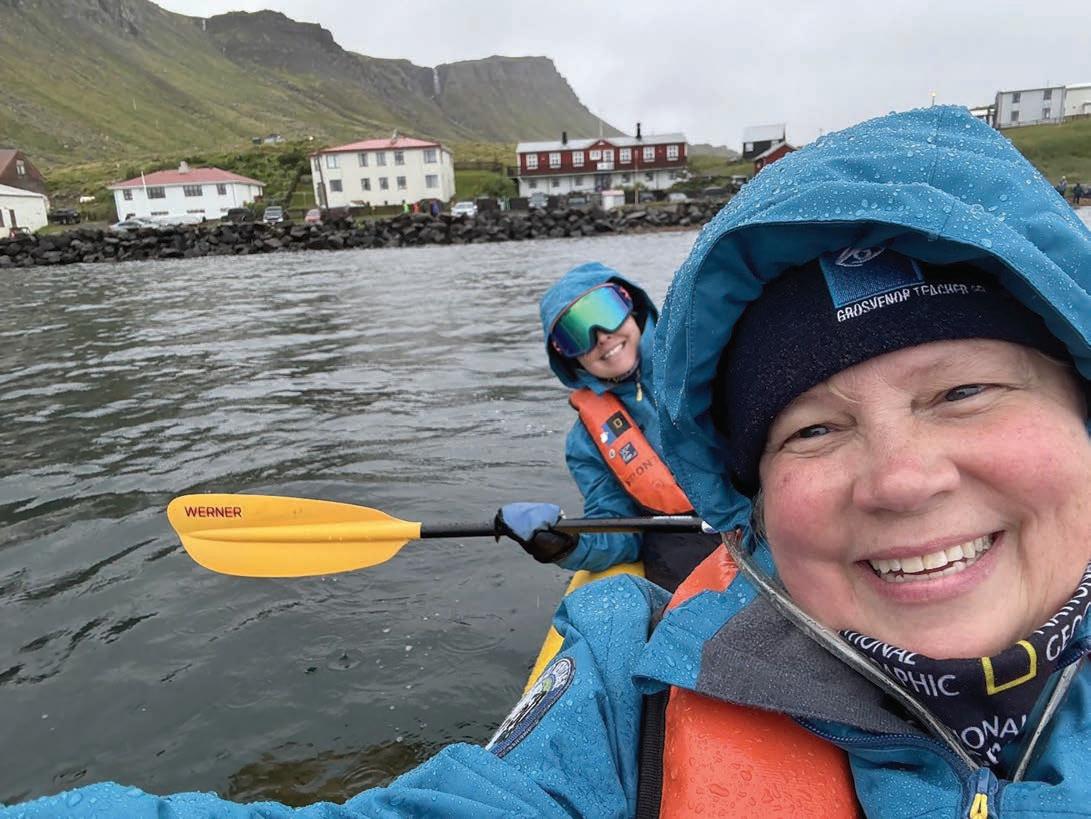
Grosvenor Teacher Fellows Kimberly Broman and Mary Patton delight in the opportunity to kayak in the icy cold waters of Djupavik. Located in the deepest fjord, Djupavik provided a unique location for the largest herring factory in Northwestern Iceland. Though the factory was abandoned in 1954, it still stands as a testament to the perseverance and tenacity of Icelandic people who built it and worked long days during the prosperous herring years. The hotel, which previously held the bunk rooms of the women who salted and packed the herring barrels, can be seen in the background. Photo by Kimberly Broman
Many of Broman’s global experiences will wind up becoming part of her lesson planning for her second graders.
“I want to first find out what my students are curious about,” she said.
But she already has plenty of ideas.
“I’d love for my students to meet the underwater diver from the Iceland trip, and see the underwater footage. Maybe we can study Jay Cooke State Park’s evidence of glaciers, and tie in what I saw in Iceland.

Broman highly encourages other teachers to apply for these amazing fellowships.
More information can be found at: https://www.nationalgeographic.org/ society/education-resources/professionaldevelopment/grosvenor-teacher-fellows/
“I’d like to reach out to Felicity Aston, to see if her 7-year-old son might be interested in being pen pals with my class. He lives on Vigur Island and has to take a boat to get to school. I’d like to do a lesson on the sea birds of Iceland and tie that in to birds of the Lake Superior region.
“And, from Costa Rica, maybe we can make empanadas together as a class. I also ‘adopted’ a sea turtle through a conservancy website. So maybe we can track the turtle and learn about mapping skills.”
“These fellowships are something I’ll never forget. It’s hard to put it into words, but I felt really valued as an educator.”
- Kimberly Broman
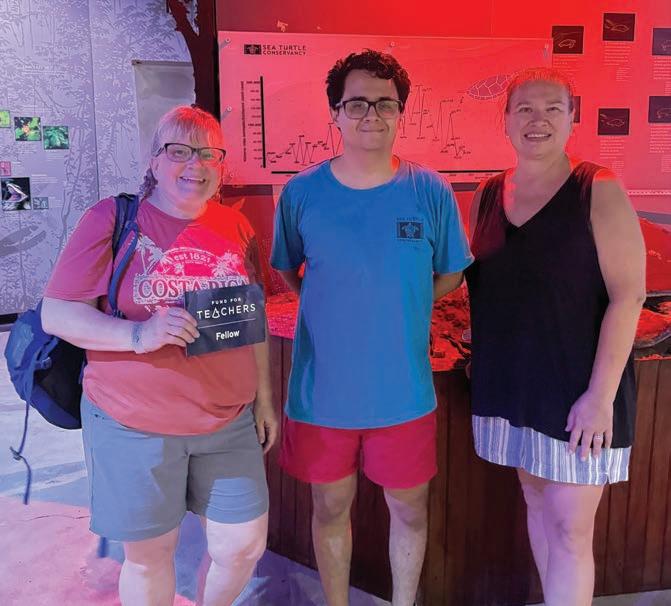
Broman said she is deeply grateful for these two amazing experiences, which have broadened her horizons in many ways.
“In the beginning, I was just an explorer,” she said. “But I wound up having so much empathy for the people and the animals; particularly the puffins.
“These fellowships are something I’ll never forget,” she added. “It’s hard to put it into words, but I felt really valued as an educator. And I feel a lot of gratitude for the connections I’ve made with other educators, too.”*
Andrea Busche is a Duluth-based freelance writer and small-business owner. She has been a frequent contributor to The Woman Today since 2008.
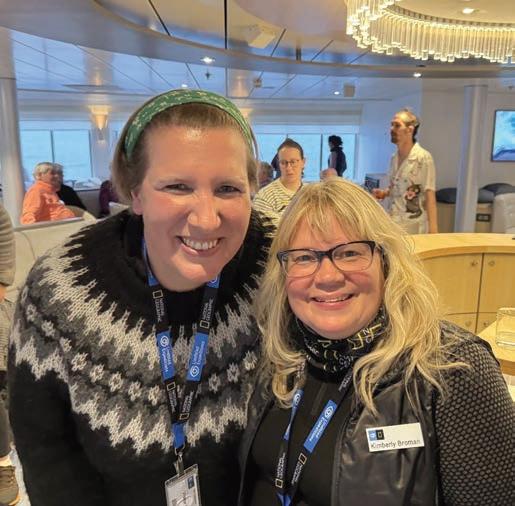
Above: "Alone in Antarctica" author and explorer Felicity Aston takes a photo with Kimberly Broman following Felicity’s presentation aboard the ship. Felicity was the first woman to ski across Antarctica, lead multiple female expeditions to remote Arctic and Antarctic locations, and she worked in Antarctica for three years. Photo by Gerard Baker


Naturebasedschoolservingstudents
Pre-K - 6th Grad
Learn more at northshorecommunity or call to schedulea tour!
Busing from Duluth and Two Harbors



By Janna Goerdt
Kelsey Evans wasn’t looking to spend her days spinning alpaca fiber into yarn.
She only wanted to find a processing mill to transform the raw fiber from her own four accidental alpacas. Evans and her husband, Bowen, had recently bought an old cattle farm in Culver, Minnesota. Just days after they moved in, some friends asked if they would be interested in taking on four alpacas that needed a new home.
Well, thought Evans — let’s try it. Luckily, their new farm had suitable barns and buildings and fencing. Evans had worked in the pharmacy arena for more than 15 years and was ready for a change of scenery.
She found it in her adopted herd of alpacas, herd animals that are native to South America and relatives of the camel. Alpacas are generally calm, contemplative and very cute — and their coats are made of some of the most coveted fiber on the planet.

Kelsey Evans wasn't expecting this, but shortly after she and her husband bought a former cattle farm in Culver, they welcomed four alpacas — Axel, Ozzy, Anthony and Cuzco — into their lives. The alpacas all needed new homes. Finding a fiber mill that could process the alpaca fiber led Evans to building her own fiber mill on the property.
What is a
They are members of the Camelidae family, including several types of camels, as well as llamas, alpacas, vicuñas and guanacos. The United Nations has declared 2024 the International Year of Camelids to highlight how camelids are important for food security, economics and culture for communities around the world.
Kelsey Evans has worked with alpaca, llama and camel fibers.






Kelsey Evans was able to buy all the machines and materials she needed to open her new fiber mill from a mill in Tennessee that was closing. There are only about 90 of these kinds of “mini-mills” in the country, Evans said. Working alone, she can process about 5 pounds of camelid fibers (from alpacas, llamas or camels) per day.


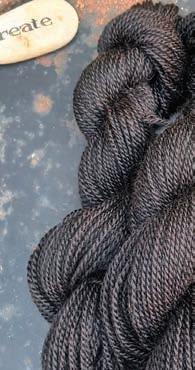
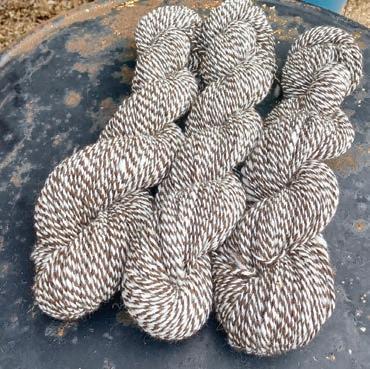
“The ancients called it ‘the fiber of the gods,’” Evans said. Alpaca fibers are water-resistant, hypoallergenic, warmer than wool, soft as cashmere, strong as hemp, flame resistant, and they don’t retain smell. Fibers can be spun into yarn, woven into cloth, or felted. Alpacas are typically shorn once a year, in early summer, to help them maintain a healthy coat.
But the mills that can transform those shearings into usable products are few and far between, Evans soon discovered.
“There’s an eight- to 14-month wait time,” Evans said. “By that time, you have (fiber) from a whole new year.”
There are about 40 large mills in the United States that can transform raw camelid fiber into yarn or other products, and another 90 or so “mini-mills” that do the work on a smaller scale, Evans said. The more she investigated the situation, the more she thought there might be a business opportunity here, as well as a chance to help out fellow camelid owners.
“I knew I didn’t want to do health care for the next 25 years,” Evans said. “I was looking for something different in my life.”
With that, Grumpelstiltskin Fiber Mill was born.

Evans was able to purchase used fiber processing machines — from the tumbler to the picker to the spinner — from a business in Tennessee that was shutting down. Again, Kelsey and Bowen Evans were able to use an existing building on their property to house the fiber mill, and she officially opened in April 2023.
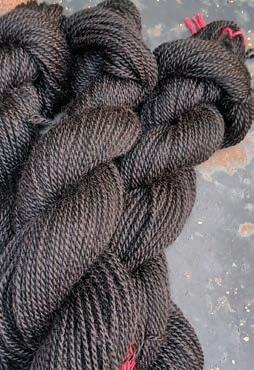

Word quickly spread and soon
Evans was working seven days a week, often 10 to 12 hours a day processing this precious fiber. Customers from across the country send her orders large and small.
On an early fall day, Evans ticked off her cross-country client list: fiber from Indiana was on the spinner, an order from California was in the wash, she was prepping an order from Alabama, and orders from Minnesota and Montana were waiting.
“It’s still surreal to me that people from all over send fiber to my little mill,” Evans said.
She has discovered that the work is satisfying in all the right ways. Evans enjoys the physicality, and creating beauty and order out of a bag of straw-studded alpaca fleece.
“I’m a good problem solver,” Evans said. “I like to make things better, smoother. I was good at that in health care, making processes better and safer.”
And Evans gets to do that today, as well, as she learns techniques and tricks to coax all this camelid hair into smooth, beautiful skeins of yarn and other products.
You begin, Evans said, with “fluff” — sheets of raw shearing fibers.
The fluff arrives in boxes — big ones, small ones — of 10 pounds to 200 pounds of fiber.
The process is mostly the same for processing all the fiber. She checks in all the orders one at a time, weighing everything as she goes. Tom the cat, her “mill manager,” monitors the progress. Tom moved in during a snowstorm five years ago and he just never moved out, Evans said.
Working alone, Evans can process about 5 pounds of fiber in a full day. If she has a helper, she can do about 10 pounds. A typical alpaca shearing will yield between 4 and 10 pounds of fiber of varying quality, she said.
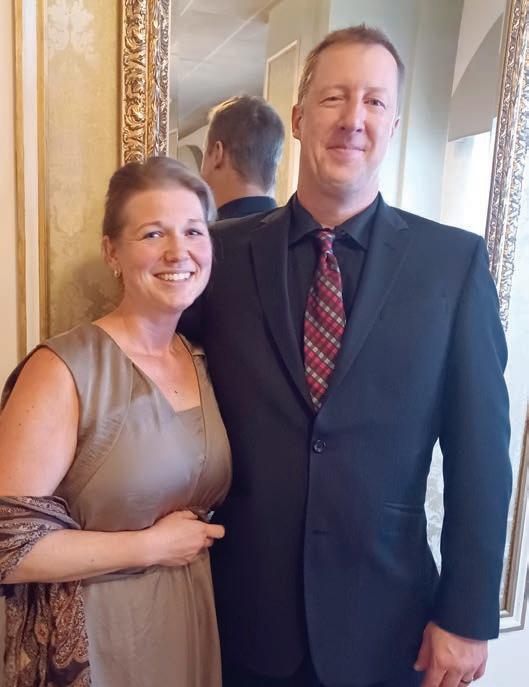



“I like to start with a big clump of fluff and end with something really pretty.” - Kelsey Evans

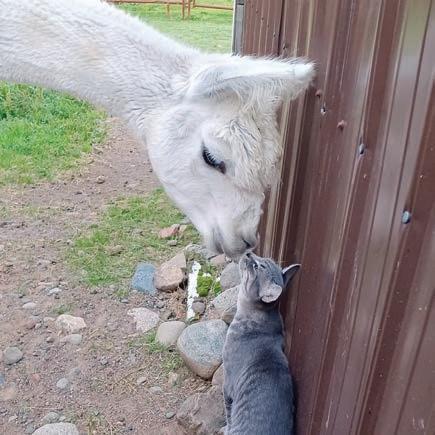
And, of course, those alpacas are just so completely adorable.
“They have that supermodel complex,” Evans said. “They know that they are good-looking and that everyone wants to be around them.”
But many alpacas are not natural people-pleasers, unlike dogs or horses, Evans said. Alpacas want what they want, and if you can supply what they want, well, then perhaps you can be friends, she said. A steady supply of treats helps a lot.
So does knowing how to approach them, Evans said. Some llamas and alpacas are trained as therapy animals, while others are more standoffish. Though the species has been domesticated for thousands of years, they are still prey animals and they maintain personal boundaries — for example, they don’t want their faces touched, Evans said.
“I spent a lot of time, when they first came, just sitting with them,” Evans said.
She enjoys that kind of quiet quality time as part of her new farm life.
“It’s very fulfilling,” Evans said. “I love my animals, I love my farm … I like my business, and I’m still learning. It’s a big learning curve, but I like it a lot. I get to be creative, and I get to problemsolve. It’s neat to start with a big clump of fluff and end up with something really pretty.”*
Janna Goerdt is an Iron Range farmer and freelance writer.

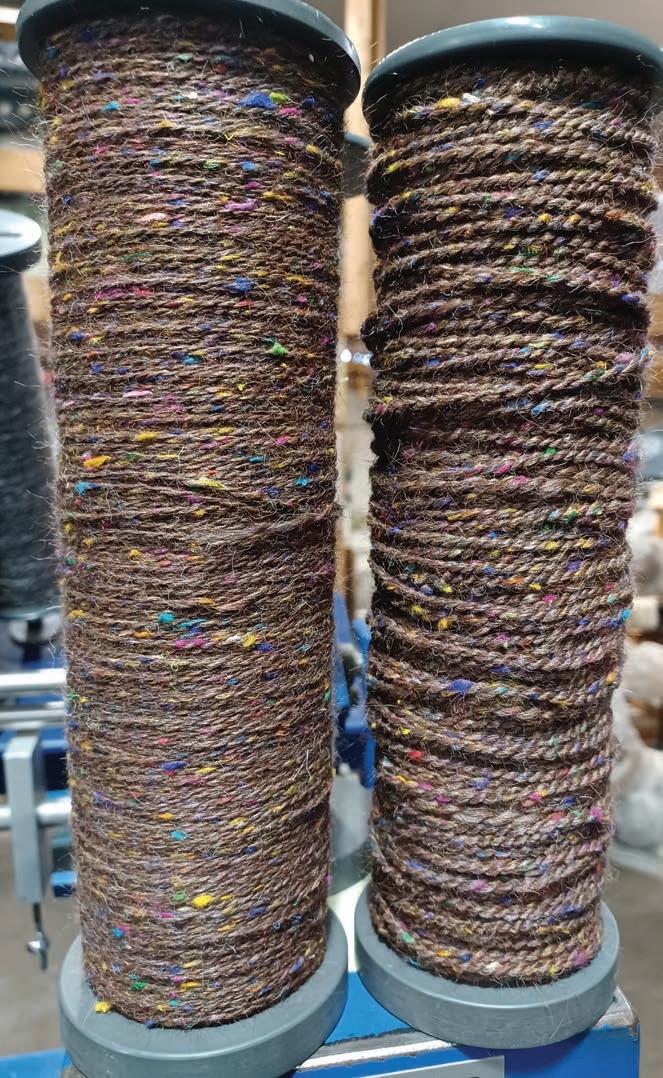

Skirting: removing any long guard hairs, twigs, chunks of dirt, straw or other foreign objects.
Tumbling: fluffs the fibers and allows any excess dirt and dust to fall out. Two washes and three rinses: an overnight soak cleans the fibers.
Drying: fibers are hung in a cedarlined room for 12 to 48 hours to dry.
Picking: this machine opens up the fibers, much as a brush does to your hair.
Separator: removes heavier fibers using centrifugal force.
Carder: collects the fibers into one smooth sheet of “roving,” which resembles cotton candy.
Spinner: spins the roving into twisted, single strands of yarn.
Plyer: winds single strands of yarn together, if desired. The yarn is then wound into skeins or onto cones, as desired, and then washed again.
Samples of yarns that Kelsey Evans, who built and operates Grumpelstiltskin's Fiber Mill in Culver, Minn., has created from alpaca, llama and camel fibers that customers send to her from across the country. Evans has four alpacas of her own, and learning about the backlog at fiber mills across the country led her to this new venture. She enjoys the process of troubleshooting and working with difficult fibers: with the brown yarn that’s studded with different colors, Evans had to come up with a new “formula” for the fiber to help turn it into yarn.



By Janna Goerdt

Photos courtesy of Elle FireSpray
These aren’t your grandmother’s board games.
Forget about Risk, Monopoly or Clue — the board games that have captured Elle FireSpray’s imagination are called Star Wars: Shatterpoint, Zombicide, and Kingdom Death Monster.
The Duluth artist, who works under the online name Elle FireSpray, has carved out a niche for herself in the world of board war games as a talented mini-figurine painter.
“I feel like I’m bringing something to life,” Elle said. “Something that was gray and dull, it now has color and is telling you a story. When you play with a painted set, it’s a full and more immersive experience.”
Each board game includes a set of miniature — usually less than 2 inches tall — pieces that players move around the board as the game unspools.

game, clad in a flowing blue robe and clutching a bejeweled staff. It might be an entire battalion from the “Star Wars” universe, or the raging leviathan from Cthulhu Death May Die.
Elle might employ the nonmetallic metal technique, which gives the illusion that the painted piece is made of metal. Or she might use wet blending, where she paints one color on a miniature, followed by another color while the first layer is still wet. Blending both colors before they are dry makes them “so smooth, very beautiful,” she said. She uses this technique a lot to create the jewel-toned, flowy robes worn by characters in the Ankh: Gods of Egypt game.

She got into board gaming in 2011, and started dabbling with painting the first game she owned, Zombicide.
“I was never good at 2D art,” Elle said.
She did enjoy doing nail art, and one day she stumbled across a YouTube video of how to paint those tiny zombies. Elle bought some primer, paint and brushes, and off she went. Today, she is the one putting out YouTube content on miniature painting techniques. She receives her specialized painting supplies from a European sponsor, Green Stuff World.
“When I tell people what I do, they kind of look at me,” Elle said. “It’s funny to see their reactions.”
It isn’t necessary to paint the miniatures in a board game, but many people prefer playing with decorated figurines, Elle said. By 2018, she was sharing her work online, and clients were seeking her out to bring their miniature sets to life in vivid color.
“Now, I have a commission to paint for the biggest board games in the industry,” Elle said.
She livestreams some of her painting projects, and has attended many gaming expos and industry shows.
In December, she will travel to the DragonSteel Nexus24 Convention in Salt Lake City, Utah, to do some painting demonstrations, teach a few painting techniques and judge a Stormlight Archive miniature painting competition.
It takes about three or four hours to take a miniature — say, one of Luke Skywalker — from start to finish, including adding an effect called “object source lighting,” where the “light” cast from Luke’s lightsaber looks like it is reflected on his face.
Elle loves the meticulous process of painting her miniatures.
“Being able to sit down and paint is meaningful to me,” Elle said. After she puts her children to bed, Elle relishes the creative outlet of immersing herself in her art.
The miniatures range in size from 25 millimeters to 80 millimeters tall, though most are around 45 millimeters, which is less than 2 inches tall. However, Elle can pack a striking amount of detail into that minute figure. “Star Wars” stormtroopers are elegantly shaded in white and gray, Mandalorian armor is highlighted in bright yellows and purples, and the lumpy flesh of that giant Cthulhu is finely textured in shades of green.



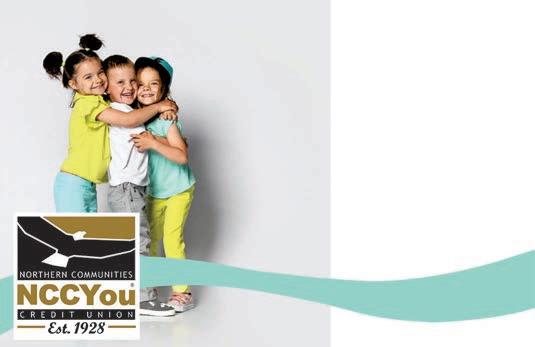




A painted miniature from the Ankh: Gods of Egypt board game arrives as plain gray plastic, but it comes to vivid life when Elle FireSpray brings out her brushes and paints.

Elle has learned the value of good overhead lighting, good posture and a good chair as she concentrates for hours on the tiny figurines. Sometimes she uses magnifying goggles for extremely small details, but mostly she relies on clean, white light.
Painting helped her get through a difficult personal situation during the pandemic.
“It was lifesaving to me,” Elle said. “There’s a lot of people out there that have found their place in the world with miniature painting.”
Elle said she also turns to that online community for support and reassurance on the rare occasions when she receives unwelcome comments or questions from her mostly male clients.
“Women see that the war gaming and mini-painting community is male-dominated,” Elle said. “I see a lot of women entering the community, but we’re still a small minority. … In general, there is a welcoming attitude towards women, but behind closed
doors, unfortunately, many of us deal with outdated attitudes or misogyny.”
When that kind of behavior arises, Elle turns to the vast majority of the mini-painting community for support.
“People say, ‘You’re not alone, this is not something you have to take, it’s not OK or normal,’” Elle said. She is careful to guard her family’s privacy in the online world. She works under her business name only.
Often on Friday nights, Elle and her three children descend to their basement game room, dubbed “The FireSpray Hangar,” after the type of ship that legendary “Star Wars” bounty hunter Boba Fett commands. There, the family can choose from about 200 different board games. Lately, they have been playing Stuffed Fables, now that Elle’s youngest daughter has grown adept at reading. The game asks players to take on the role of a favorite stuffed animal that is seeking to protect the child they love. It’s a great game for a young family to play together, Elle said.
And on those tough days, she also turns to her family for inspiration.
“I think of my daughters,” Elle said. “I think of how inspiring this can be for them. I feel like they can do anything they want. There can be so many barriers, still, people saying you can’t, you’re not good enough.”
But Elle wants her daughters to know they can find their place in the world, just as she has done.
“I wanted to do this for them,” she said.
Find examples of Elle FireSpray’s work at https://linktr.ee/ ellefirespray.*
Janna Goerdt is an Iron Range farmer and freelance writer.

Elle FireSpray livestreams a painting demonstration.

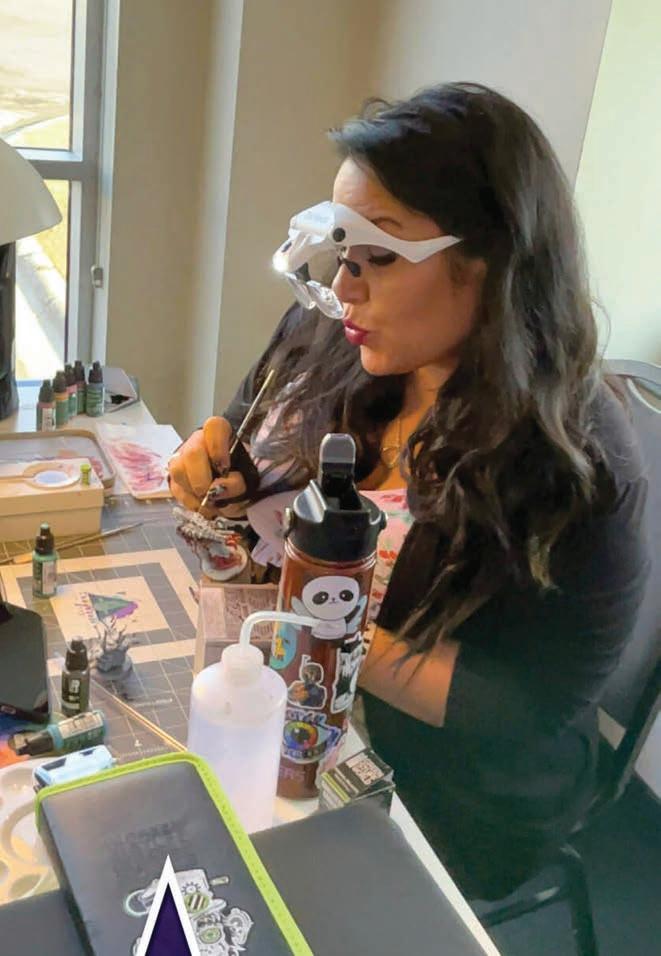

Thisseason,makegift-givingsimpleandmeaningfulwithaskincaregiftcertificate. Treatyourlovedonestoaluxuriousexperiencethathelpsthemlookandfeel theirbest.Becausethebestgiftisonethatlasts—radiant,glowingskin. TheEasiestGifttoGive? TheGiftofBeautiful,HealthySkin.
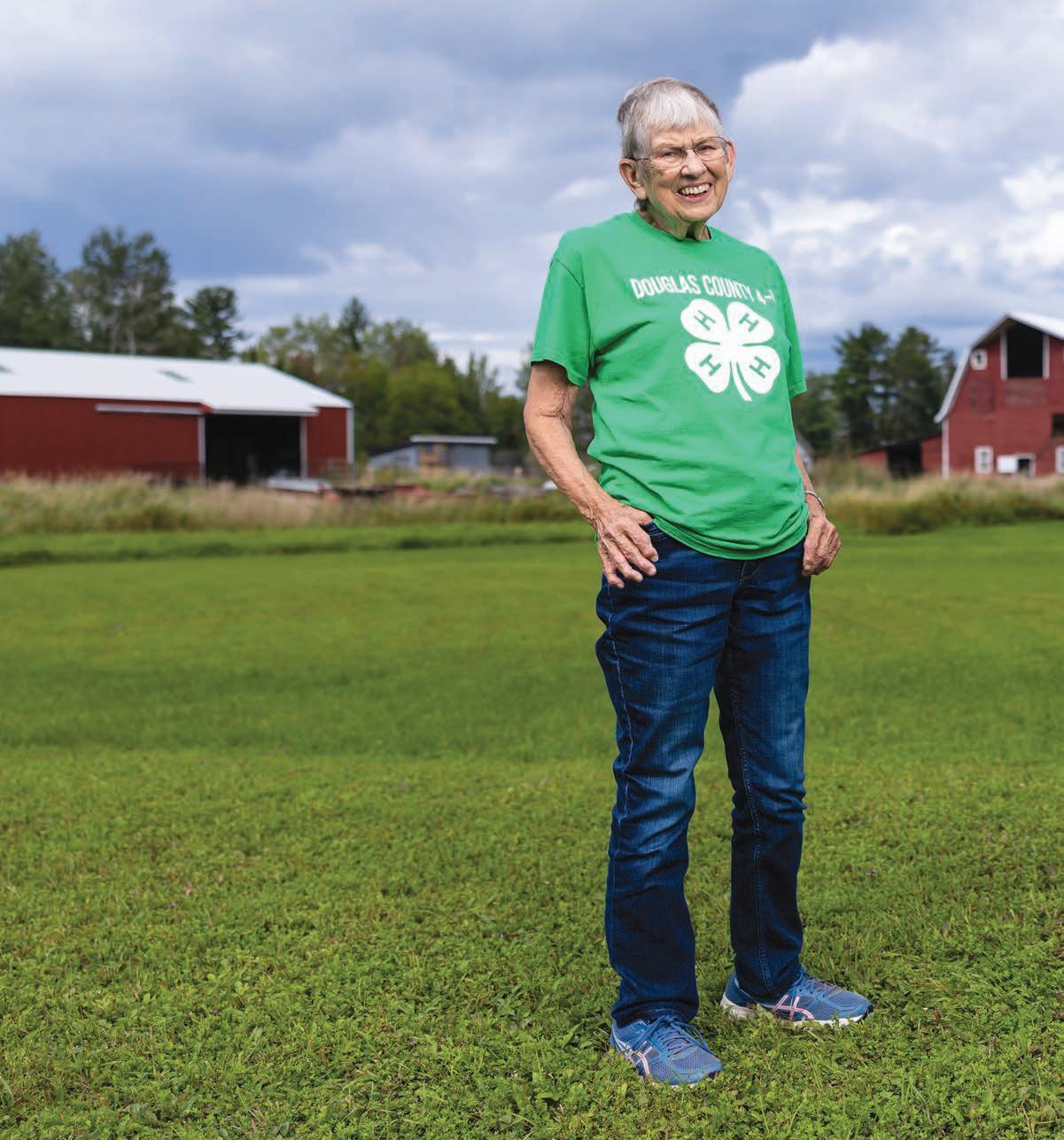
“I’ve never had a negative experience.”
- Pat Luostari

By Anthony Matt
At 86 years young, Pat Luostari of Maple, Wisconsin, has had her share of visits to the doctor’s office.
“I’ve made hundreds of trips to Essentia Health for care and I’ve never had a negative experience,” she said.
For about 60 years — through four pregnancies, two battles with cancer and countless routine visits — Luostari has trusted her well-being to Essentia. It’s a health care journey that transcends time.
“Essentia has always had people willing to take care of me, help me, and they always do it with a smile,” Luostari said.
About 20 years ago, she survived breast cancer with the help of experts at Essentia, and earlier this year she was treated for and overcame skin cancer.
“It always feels so easygoing,” Luostari said. “I never get tense or scared about going. Everyone is going to be kind, sensitive and polite. I never feel rushed, and I always feel like people are there to take care of me.”
For the past 10 years, she has trusted Dr. Michael Kassing, an OB-GYN at Essentia, with her health care needs.
“He’s a really nice person, he’s not invasive and he’s always ready to figure things out and ask the right questions,” she said.
“Pat is a fantastic patient because she takes an active role in her care,”
Dr. Kassing said. “She is always asking questions and is engaged in her treatment plans. She listens to all treatment options and is thoughtful in choosing the one that is right for her.”
Luostari would like to remind people to always take care of their health.
“Pay attention. If something feels off, go get it checked out and don’t be afraid to ask questions,” she said. “That’s how I caught both of my cancers, and we were able to take care of each one.”
With so much experience receiving health care, she has a few words of advice for people who put it off, especially when something doesn’t feel right.
“If something is making you nervous, or you’re afraid, it’s often nothing, or easy to take care of,” she said. “And if it is something serious, the sooner you catch it, the better chance you have to beat it. Regardless of age, just pay attention and don’t be afraid to get your body taken care of. You only have one.”
She’s not the only one in her family who is a patient at Essentia. Luostari’s husband of 64 years, Larry, also is a patient and they brought all their children to Essentia while they were raising them.
“Our treatment has always been caring and sensitive,” Pat said. “We’ve received sound medical advice, and I just couldn’t be more grateful for the care we’ve received.”*
Anthony Matt is the media relations specialist at Essentia Health.
We make every effort to ensure the accuracy of this information. However, you should always call ahead to confirm dates, times, location, and other information.
Duluth Junk Hunt
NOV. 8-9

This two-day indoor market is filled with rusty, chippy, vintage goodness! The DECC’s Pioneer Hall will be filled with vendors from all over Minnesota. Visit decc.org/events-calendar.
Coppertop Craft and Bake Sale
NOV. 9

More than 30 area crafters will offer homemade gifts from 9 a.m. to 2:30 p.m. at First United Methodist Church, 230 E. Skyline Pkwy, Duluth. Hot cinnamon rolls are available and lunch is served at 11 a.m.
Jingle All the Way Craft and Small Business Christmas Show
NOV. 9
The seventh annual event, at the AAD Shriners Center, will feature 45 vendors, lunch and the Shrine Fun Razors. Visit facebook.com/ events/1497076351072812.
Nice Girls of the North Arts and Craft Show
NOV. 9


This market features unique work from local women, and is held on the second Saturday of the month at Spirit of the Lake Community Arts. Visit nicegirlsofthenorth.com.
Neighbor-Made: Art and Gift Fair
NOV. 9
This local marketplace, at Peace United Church of Christ, will feature more than 25 local artisans. Visit wendyupnorth.com/ duluthfairs.html.

Duluth Armory Community Art Show
NOV. 15

The Armory Arts & Music Center is celebrating the 109th anniversary of the Historic Duluth Armory with a fundraising event from 4:30-7 p.m. at Bent Paddle Brewing. The art show will feature about 20 artists and their works, focusing on the theme of the evening: Preservation.
NOV. 16

This annual event will be held from 10 a.m. to 3 p.m. at First United Methodist Church (Coppertop), 230 E. Skyline Pkwy, Duluth, featuring high quality hand crafted textiles, wearables, and art, as well as fiber demonstrations and children activities. Visit duluthfiberguild.org/ fiber-fair-sale.
NOVEMBER
Nov. 6 - The Glenn Miller Orchestra
Nov. 7 - Free Fallin’: Tom Petty Tribute Nov. 14 - Xpedition
Nov. 21 - Harmonious Wail
Nov. 24 - Gregorian: Pure Chants Tour
Nov. 27 - Duluth Transit Authority: Chicago Tribute Act.
Find updated information at thewesttheatre.com

“The Impresario & Circe” on Superior NOV. 1, 3

Lyric Opera of the North (LOON) opens the 2024-25 season with “The Impresario & Circe” on Superior, performed at the St. Louis County Depot main stage. Visit loonopera.org/events/theimpresario-circe-on-superior.
Swan Lake NOV. 2
Presented by The World Ballet Company, “Swan Lake” will be performed at the DECC’s Symphony Hall one night only. Visit decc.org/ event/swan-lake.

Barenaked Ladies: In Flight Tour NOV. 6
This rock quartet has performed for over 35 years, and will perform at the DECC’s Symphony Hall with special guest Toad The Wet Sprocket. Visit decc.org/eventscalendar.

NOV. 7-23
Singer-songwriter Gaelynn Lea and storytellerplaywright Kevin Kling combine their talents for this original musical fable that will be performed at Zeitgeist. Visit zeitgeistarts.com/theater.
Anastasia: The Musical (Youth Edition) NOV. 8-10
This one-act adaptation of the Broadway hit, specially tailored for young actors and audiences, will be performed at Visit the Duluth Playhouse. Visit duluthplayhouse.org.


Steve-O: The Super Dummy Tour NOV. 12
Steve-O entertains audiences with his daring stunts, comedic talents, and larger-thanlife personality. He will perform at the DECC’s Symphony Hall. Visit decc. org/events-calendar.

MW3: Bruckner’s Te Deum NOV. 16
The Duluth Superior Symphony Orchestra marks the 200th birthday of Anton Bruckner with this Masterworks event at the DECC’s Symphony Hall. Visit dsso.com.

Festival of Trees
NOV. 16-17
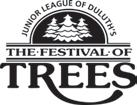
Hosted by the Junior League of Duluth, this 36th annual event will be held at the DECC, featuring over 170 unique vendors showcasing trees, art, crafts and gifts. Visit juniorleagueduluth.org/ festival-of-trees-2024.
REO Speedwagon with Loverboy
NOV. 19
These iconic rock bands from the 1970s and ‘80s will perform at Amsoil Arena. Visit decc. org/events-calendar.

Cirque Musica Holiday Wonderland
NOV. 23
The DECC’s Symphony Hall will be transformed into a world of holiday enchantment with awe-inspiring acrobatics and gravity-defying aerial feats. Visit decc. org/events-calendar.

Christmas City of the North Parade
NOV. 22
Since 1958, this annual holiday tradition, organized by KBJR, features marching bands, dance performances, colorful floats and an appearance by Santa Claus. Visit northernnewsnow.com.
DanceWorks ’24
NOV. 22-24

Duluth Children’s Museum 115 S. 29th Ave. W., Duluth 218-733-7543 duluthchildrensmuseum.org

Embracing the diversity of choreographic voices, UMD dance artists unite to create a mesmerizing showcase of creativity and connection at the Marshall Performing Arts Center. Visit tickets.umn.edu/UMDCAHSS.
Opening Night
NOV. 23

This free walkthrough Christmas light show at Bayfront Festival Park celebrates 21 years with fireworks on opening night at 6:30 p.m. Other events are planned in November and December. Visit bentleyvilleusa.org.
Christmas City Express
NOV. 29-DEC. 22
The North Shore Scenic Railroad offers this storybook experience for families with children under 10 and the young at heart. Visit duluthtrains.com/event/ christmascityexpress.

Duluth Depot 506 W. Michigan St., Duluth 218-727-8025 duluthdepot.org
Douglas County Historical Society 1101 John Ave., Superior 715-392-8449 douglashistory.org
Glensheen Historic Estate 3300 London Road, Duluth 218-726-8910 glensheen.org
Great Lakes Aquarium 353 Harbor Dr., Duluth 218-740-3474 glaquarium.org
Lake Superior Zoo 7210 Fremont St., Duluth 218-730-4500 lszooduluth.org
North Shore Scenic Railroad 506 W. Michigan St., Duluth 218-722-1273 duluthtrains.com
The Lake Superior & Mississippi Railroad 6930 Fremont St., Duluth 218-624-7549 Lsmrr.org
How urogynecologist Dr. Jessica Selle empowers women to reclaim their lives at Aspirus St. Luke’s

By Claire Kiger
Come health concerns can feel more private than others. (For this reason, all patient names used in this article have been changed.)
For 34-year-old Jen, it was the urinary leakage she experienced while running and during other activities. This issue became so severe it affected her desire to stay active. Beyond the embarrassment, she worried about what treatment might mean for her future and her ability to grow her family.
Kathleen, 55, also dealt with urinary incontinence, soaking five to six pads a day, sometimes even her clothes. She had tried pelvic floor therapy, fluid management and medications, all with little success, leaving her feeling isolated and helpless.
Eighty-year-old Margaret lived with vaginal bulge symptoms from pelvic organ prolapse, a common issue for older women. She was in almost constant discomfort, and her ability to walk was significantly affected. Like Jen and Kathleen, Margaret, too, was starting to wonder if there was any hope.
But hope did exist. All three women eventually found the solutions they were looking for thanks to Dr. Jessica Selle at Aspirus St. Luke’s. As the only urogynecologist north of the Twin Cities, Selle helps women struggling with a wide range of pelvic floor disorders.
“I am passionate about women taking control of their health so they can live happier, healthier lives,” Selle said. “That’s why I love urogynecology so much. This specialty has enabled me to treat issues that many thought they had to just live with.”
Common issues treated by Selle include loss of bladder or bowel control, pelvic organ prolapse, frequent urination, childbirthrelated pelvic floor injuries and other pelvic floor disorders. Ultimately, her goal is to help women regain function, comfort and quality of life.
“I want more women to know that they are not alone and that there absolutely is hope for them,” Selle said. “These issues are far more common than many realize, and much can be done to improve symptoms and quality of life.”
The problem is, there are a lot of myths surrounding pelvic floor disorders that can keep women from reaching out.
“The No. 1 misconception I hear is that pelvic floor issues are just a normal part of aging or life after childbirth,” Selle said. “While these issues are common for women in these demographics, it does not mean they just have to live with them.”
Both nonsurgical treatments, such as physical therapy and pessaries, as well as surgical interventions can greatly improve symptoms.
Selle has also found that many believe these issues only affect women who have given birth.
“There are a lot of women who have not had children who do have pelvic floor disorders,” she said. “Many factors come into play, so it’s best to seek care if there are bothersome pelvic floor symptoms.”
Myths about physical therapy can also prevent women from seeking treatment.
“There’s so much more to pelvic floor physical therapy than just learning Kegels,” Selle said. “Physical therapists can teach a variety of exercises that can be incredibly helpful.
“Physical therapy isn’t only for women dealing with pain,” she added. “It can address issues like overactive bladder, urinary incontinence, and can relieve symptoms associated with mild prolapse. So, if you’ve dismissed physical therapy because of these misconceptions, it’s worth reconsidering.”
So, when is it time to reach out? Some signs that it may be time to seek specialized care include:
• Urinary incontinence: Accidental leakage of urine.
• Stress urinary incontinence: leakage of urine with coughing, sneezing, laughing, and exercise (loss of support to the urethra).
• Overactive bladder: Frequent, urgent need to urinate, with or without leakage (loss of bladder control).
• Pelvic organ prolapse: Feeling a bulge or pressure in the vagina, or a sensation that something is “falling out” or not in place.
• Fecal incontinence: Accidental leakage of stool. “If you’re experiencing any of these symptoms, at the very least, schedule a consultation,” Selle said. “We can talk, get to the bottom of whatever you’re experiencing and decide on a course of action – together.”
Schedule an appointment with Dr. Selle at Aspirus St. Luke’s Obstetrics & Gynecology today – no referral required. Call 218-249-4950 or visit slhduluth. com/obgyn.*
Claire Kiger is a writer and marketing specialist at Aspirus St. Luke’s.
“I want more women to know that they are not alone and that there absolutely is hope for them.” - Dr. Jessica Selle

By Tony Bennett
When it comes to jobs that require a lot of sacrifice, there are few that demand as much as being a health care provider.
Odd hours, long shifts, and work that is draining physically and emotionally are up there with soldiers and first responders with how much of oneself the job demands. And yet, when it comes to the nurses who care for everyone from the tiniest premature babies to the most senior elders in a community, they remain underappreciated in many regards.
When the pandemic hit around five years ago, hospitals were overrun and a million-plus people died in America alone. Yard signs popped up here and there that asked citizens to thank a health care worker, and people banged on pots and pans out their windows during the lockdown for a while, but eventually the pandemic ended and the signs came down and the pots and pans went quiet.
In the Northland, though, a concerted effort is being made to prominently salute those nurses who have dedicated their lives to serving others in need of medical
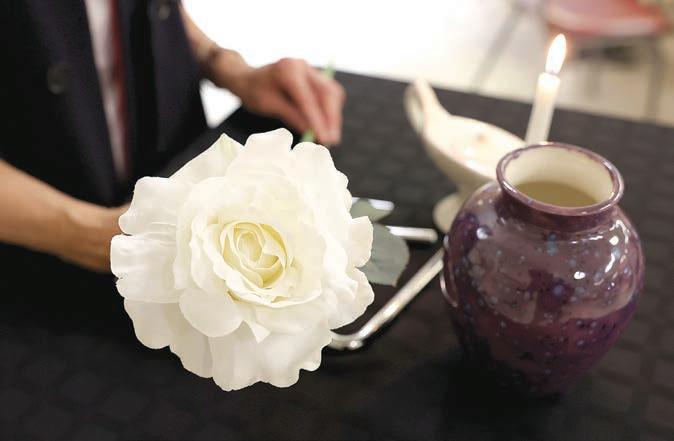
assistance. The Nurses Honor Guard is a recently established collective of nurses who volunteer their time to honor other nurses after they pass away, or as they approach the end of their lives in hospice. It’s a group that’s inspired by similar groups around the country that look to honor nurses at the end of their lives the way the military will honor a soldier at theirs. The point is to not just say





“goodbye” to a person, but also to say “thank you.”
Jan Stevens brought the idea of an honor guard to Duluth after hearing about other communities that had introduced the practice.
“The first was started in Kansas in 2003,” Stevens said, “and now there are nurses’ honor guards all over the country. Locally, we started the Nurses Honor Guard of the Twin Ports in 2021.”

Pam Franklin is the Duluth leader and Stevens is the Wisconsin leader. Stevens said there are about 32 volunteers on her side of the equation, and the list keeps growing. Thus far, the Guard has performed more than 50 funeral or bedside tributes. Their visibility has grown as funeral directors learn of their capabilities and educate grieving loved ones about their existence.
“The ceremony is free of charge,” Stevens said. “The Nurses Honor Guard does a very brief but very touching tribute, either at the nurse’s funeral at a gravesite or a celebration of life — whenever and wherever the family wants it done. One nurse is the narrator, dressed in the traditional whiteuniformed nurse’s cap and cape,
while the other nurses are dressed in white tops and black pants. It’s a very powerful image, and it also honors the memory of Florence Nightingale, the founder of modern nursing.”
The short tribute is meant to honor the memory of a specific nurse and also to place them symbolically in the fraternity or sorority of nurses, to show that their sacrifices to help others have not gone unappreciated.
“Nursing is one of those fields where, if there’s a nurse that has a family and she’s on the p.m. shift, their whole family is on that shift,” said Franklin, a 25-plusyear parish nurse. “So for a family to say goodbye, it’s saying goodbye to a lifestyle” as well as to the person themselves. “The family members are so grateful because they didn’t know how to honor their loved one. When you see a whole row of nurses that
stand up — it means a lot.”
It’s clear that NHG members pour their hearts and souls into their mission, just as they do their day-to-day nursing work.
“It gives me great joy,” member Catherine Anderson said, “to be part of something that is so meaningful for nurses. I’ve been a nurse for over 30 years, and I know that nurses devote their lives to nursing. It’s not like a 9-to-5. You don’t get to be off on Christmas just because it’s Christmas. So to honor them, to honor their service, is very important. We know we’re doing what needs to be done out there.”
Retired nurse Beverly Pederson has been friends with Jan Stevens since they were children, and today they’re still inseparable.
“I trust Jan,” she said. “She’s a good planner and leader.”
For her, being a part of the
Pam Franklin, Arrowhead Parish Nurse coordinator, holds a copy of the Nightingale Tribute that she read while performing with the Nurses Honor Guard at
NHG is about shining a light on the tradition of the nurse, especially in a high-tech world.
“The human contact and the respect — I don’t want to lose that,” Pederson said, pointing out that the many volunteers the Nurses Honor Guard now has speaks to this shared desire. “We can all answer the call.”
And that’s what being a nurse is about — answering that call when it comes, even though it can put a strain on their personal lives, even though it can be heartrending work.
For the Nurses Honor Guard, honoring their fellow nurses is a solemn duty, but one they take on to make sure people know just what it takes to help those who are in need.*
Tony Bennett is a Duluth freelance writer.


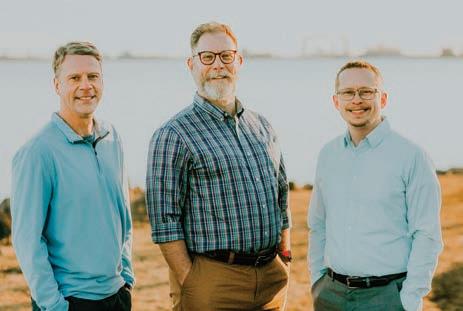



blend artistry, time management, athleticism, into their performances
By Tony Bennett





There are artists and athletes, and then there are ballet dancers.
Combining the creative with the athletic requires an immense amount of hard work, dedication, drive and determination, and the dancers who make up the Minnesota Ballet in Duluth are first-class studies in how to bring all those elements together to produce transcendent beauty. To be a part of a ballet company is to be a shining example of what the human body and heart are capable of, and it takes a lifetime to get there.
“I am really grateful to have the opportunity to work with these professionals on a daily basis, not just because they are good at what they do, but because they are also amazing people,” said Karl von Rabenau, the Minnesota Ballet’s artistic executive director. “The value of a dancer as I see it is whether they are able to connect with our audiences and move them in both expected and unexpected ways. We all go to see live theater not just for the show, but (for) what we experience together with not only other audience members, but also the performers.
“We as performing artists have an opportunity, a requirement, to create a space and moment for our audience to experience something that rejuvenates or sustains them beyond the end of each performance. I am very honored to work with artists of that kind and am excited to see how they affect and move our community.”


Weprovide flexiblehours,personalized careand98%patientsatisfaction atthreeconvenientlocationsnearyou.
Scheduleanappointmenttoday. parkdental.com
“RIGHT OFF THE BAT, I GOT A REALLY GOOD ENERGY. THE AUDITION WAS VERY POSITIVE.”
- Juliana DeBellis
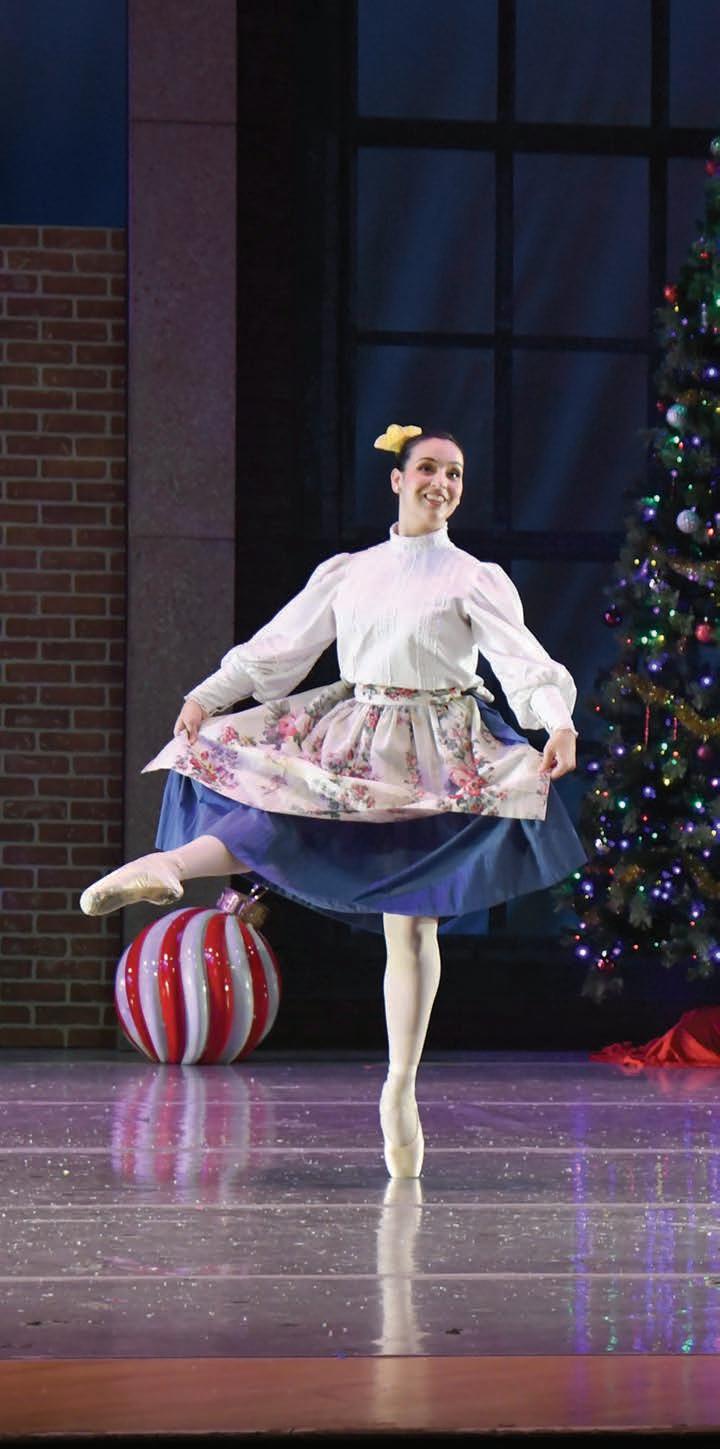
San Diego-raised dancer Juliana DeBellis has been on her life’s path since before she was even 4 years old, she said, and her hard work brought her to the Minnesota Ballet in 2022.
“Right off the bat, I got a really good energy,” she said. “The audition was very positive. There are some auditions out there that can get a little frustrating. It was a breath of fresh air. I worked as an apprentice for two years, and I was just promoted to full-time company dancer.”
DeBellis is so guided by her love for the art that she’s even gone to school to learn about arts leadership and entrepreneurship to prepare for the day when she might be compelled to pursue the administrative side of things. She’s even gotten into advertising.
“One of the things that I really love doing here is making the promotional videos that we post,” DeBellis said. She explained that her college media training has helped make herself invaluable to any dance company that she may work for. Being that she’s already showing off the full range of her skills in her first job as a professional ballet dancer, she’s already seeing her work pay dividends.
DeBellis said she’s been quite pleased with her time in Duluth, and the “sense of community” among her fellow dancers brings her great satisfaction.

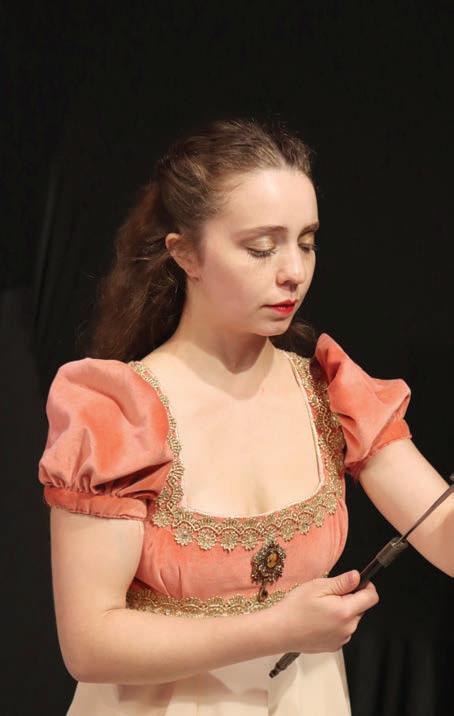

“It’s been, honestly, really special,” she said. “It can be difficult as a dancer because it’s this very high-stress environment. We’re constantly pursuing this impossible goal of perfection. In this company, there’s this acknowledgement and acceptance of our humanity. We’re not just bodies on a stage moving. We’re people who have thoughts and opinions and ideas who will sometimes make mistakes. It’s been really wonderful, especially for my first experience, to come into this really empathetic and understanding environment.”
Dancer Brooke Bero trained at the Milwaukee Ballet, where von Rabenau and his wife, concert mistress Jenny, came from. Bero’s been in her field for a decade and the Minnesota Ballet is her fifth company. Like DeBellis, she feels she brings a number of skills to the table.
“I do play a few different roles at the ballet,” she said, noting that she’s a teacher at their school as well as a dancer. “I teach kids (from) 3 to 9 or so. As a child, I got to dance in these ballets, and now I get to help kids do that and be the one to look up to.”
Being a dancer, then, isn’t just about showing up and doing one’s own thing. Sometimes it’s teaching. Or editing videos. Or doing press. There are many different roles and many hats to wear for a dancer. Oftentimes they even work regular jobs in addition to their nearly full-time daily ballet schedules.
“We take classes to warm our bodies up, and then we rehearse from 9:30 to 3:30,” Bero said. “Other people have second jobs – mine being (that) I teach in school. So I’m most often at the studio until at least six or seven in the evenings.”


“ I FEEL LUCKY . THERE COULD BE A WHIRLWIND OF THINGS HAPPENING, BUT MORNING CLASS IS ALWAYS THERE AS A STABLE THING.”
- Brianna Crockett

Brianna Crockett & Isaac Sharratt
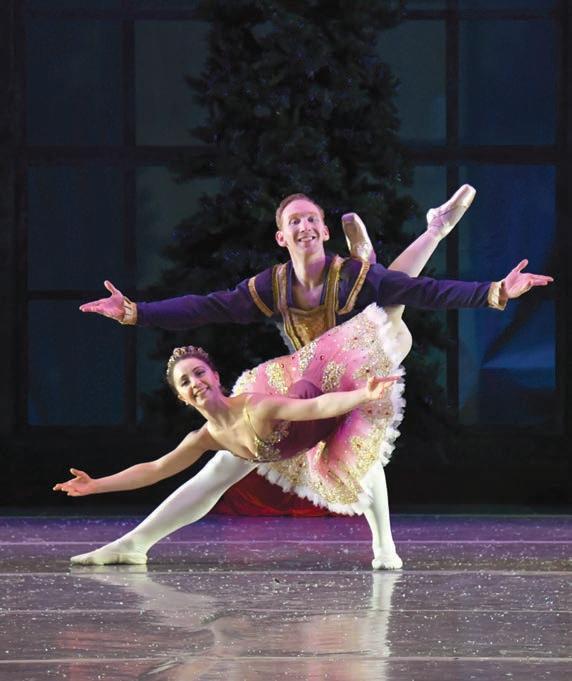
Brianna Crockett came to the Minnesota Ballet by way of Colorado, and she’s been with the company since 2018. She’s grateful to be able to pursue her passion.
“I feel lucky,” she said. “There could be a whirlwind of things happening, but morning class is always there as a stable thing. The art itself really helps me keep my eye on the prize, so to speak. The art brings me back to my younger self, and why I love to do it.”
Crockett does what it takes to subsidize her dancing. She teaches dance inside and out of the ballet, is a yoga instructor and has worked at a smoothie shop. And she’s even found time to go to college. But, above all, she does everything she can to stay in the best physical shape she can.
“We have to keep our instrument fine-tuned,” she said, “to reach the maximum output that we want, which is difficult. But, you know, more than three days off and your body starts to lose power.”





All of this combined dedication to the craft comes to fruition during the ballet’s performances. The fall and winter are a busy season for the company, with the holiday season’s “Nutcracker” being a big draw every year.
“We do have a full slate of shows scheduled for our 2024-25 season,” von Rabenau said. “We are bringing back our very popular Poe ballet for the Halloween season. From there, we will transition to our holiday favorite ‘Nutcracker: A Duluth Tale in December.’”
In the new year, there will also be a tribute to Glenn Miller, a “Romeo & Juliet” performance, and a show that will incorporate local kids of all dancing abilities.
The slate of upcoming Minnesota Ballet performances is the result of a ton of talent, training and time, and many moving parts will be brought together to ensure a first-class experience for their fans. They’ve choreographed it all in a way that works. *
Tony Bennett is a Duluth freelance writer.
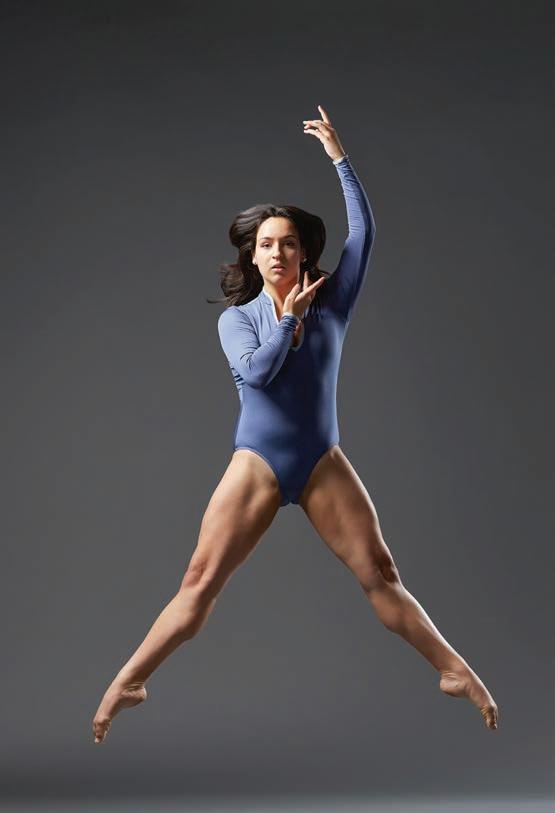


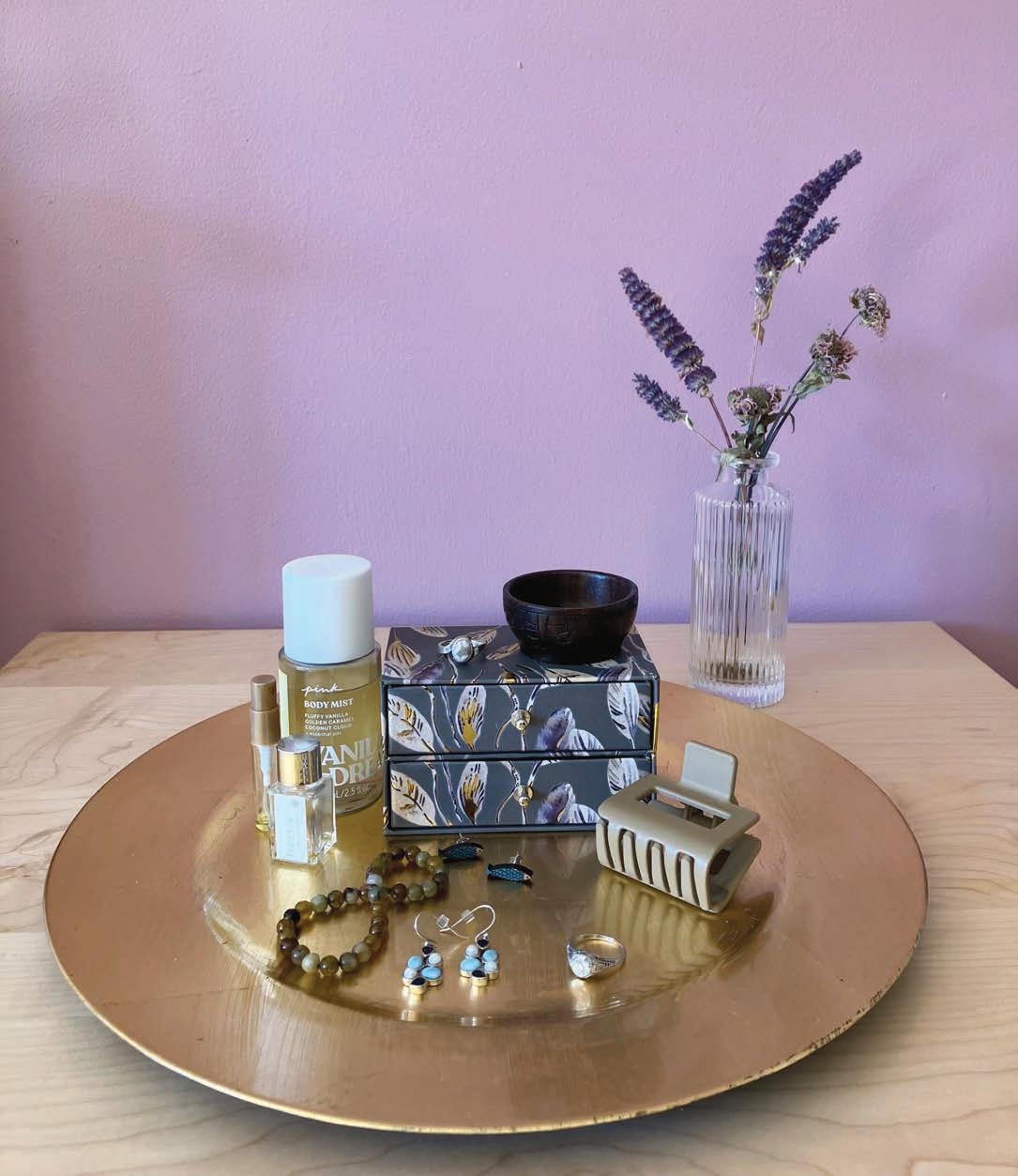
By Molly Milroy
If you’re looking for a simple yet elegant way to elevate your home décor, gold charger plates are a great option, adding style and ambiance to your home. While traditionally used as a base for dinnerware during special occasions, these large decorative plates can be repurposed to add a touch of glamor to everyday spaces. Whether you’re hosting a gathering or just want to refresh your home’s aesthetic, here are four creative ways to use gold charger plates to boost your home décor.
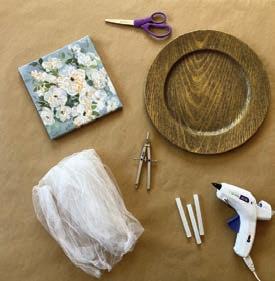
One of the easiest ways to elevate your mantel is to use gold charger plates as a base for a custom art piece. The plate’s reflective gold surface can brighten any room and serve as a focal point above your fireplace. With their round shapes and metallic surfaces, they are stunning statement pieces.
Materials: Gold charger plates, scissors, floral or decorative paper, hot glue gun and glue sticks, tool, jute cord.

Gold charger plates make excellent bases for candle centerpieces in a cozy and intimate setting. Their metallic sheen reflects the candlelight, creating a soft, glowing ambiance. This makes it perfect for romantic dinners, holidays or cozy nights at home.
Materials: Gold charger plate, three to five pillar candles (neutral or white shades) of varying heights, decorative elements such as greenery, small flowers or seasonal items like pinecones or autumn leaves.

Another option for gold charger plates is using them as an elegant vanity tray, providing a way to organize your jewelry or cosmetics. This space will allow for a clutter-free, glamorous display to be placed on your dresser or bathroom counter.
Materials: Gold charger plate, small decorative trays or dishes, jewelry, makeup, perfume or other items to display.

Turn a gold charger plate into a one-of-a-kind wreath for your front door, perfect for celebrating different seasons or holidays.
Materials: Gold charger plate, hot glue gun and glue sticks, artificial flowers, ribbons, or greenery, seasonal accents like minipumpkins or ornaments.
Begin by determining where you want to place the plate. Then select a decorative paper that complements the color scheme of your room. Floral patterns, geometric designs or bold colors all work well. Cut a circle out of the paper, slightly smaller than the size of your plate. Then glue it onto the center of the charger plate. Wrap tool or jute cord to create a frame around the paper and secure it with glue.
This DIY art display will add a warm golden tone to your mantel and allow you to customize the design to suit your style.



Place a gold charger plate in the center of your dining or coffee table. Next, arrange multiple pillar candles on top of the plate, starting with the tallest in the center and surrounding them with shorter ones. Then you may add decorative elements around the candles to fill in gaps. For a more organic look, opt for small succulents, branches or seasonal foliage that complement the vibe of your space.
This easy-to-create candle centerpiece can be updated throughout the year to reflect different seasons or occasions.


Place the gold charger plate on your vanity or dresser as the base. Arrange your jewelry, makeup items and/or perfume neatly on the plate. Use smaller dishes or bowls for rings, bracelets or small earrings. Add a decorative mirror to give it a luxe touch. Another option is adding a small vase of flowers (natural or artificial).
This gold charger plate will keep your beauty essentials organized while adding a touch of elegance to your personal space.
Arrange the greenery or artificial flowers around the rim of the plate and secure them in place using a hot glue gun. Add other decorative accents like ribbons, bows or holiday-specific items depending on the season. Attach a piece of twine or ribbon to the back of the plate to hang it on your door.
This quick and easy DIY project creates a stunning wreath that can be customized to suit any season or holiday.*




By Ali Carlson

We don't know about you guys, but Sloane has taken advantage of every MOMENT of warm weather this fall!
We've visited our favorite local family friendly locations, we've walked miles in the woods identifying leaves and animal markings (thank you, Google, for your assistance with this!) and just soaked up everything our community has to offer. Bring it on, winter — we are ready for you! Well, Sloane is, mom's not quite there yet :)

the Aquarium
SCUBA SANTA
Scuba Santa will be offered at 11 a.m. on the following Saturdays and Sundays: Nov. 30-Dec. 1, Dec. 7-8, Dec. 14-15, and Dec. 21-22, in the Isle Royale exhibit.



Educational programming. Family events. The St. Louis County Depot is a welcoming space for all. Follow us on social media or visit our website to find all there is to experience inside this wonderous building. ExperienceTheDepot.org or “St. Louis Count Depot” on Facebook & Instagram.




Brought to you by:

Make-ahead to share at home or take along

By
Pumpkin-shaped cheese ball for a fall-themed platter
INGREDIENTS:
1 pkg Cream cheese, softened
½ cup Sour cream
1 cup Sharp cheddar cheese, shredded
2 Tbsp. Garlic scapes, chopped fine
2 Scallions, chopped
3 Tbsp. Bell pepper, orange or red, chopped fine
(save the pepper stem for decoration)
¼ cup Bacon, cooked, chopped (approximately 5 slices, or use a real bacon salad topper)
¼-½ cup Bagel seasoning blend
Assortment of crackers, pretzels or veggies
DIRECTIONS:

In a bowl, mix together all ingredients until just blended. Cover and refrigerate for at least 30 minutes.
On a parchment lined dish, place cream cheese mixture and shape into a round form. Using the back of a butter knife or kitchen string, create creases give the shape of a pumpkin. Press the bell pepper stem into the top. Sprinkle the bagel seasoning blend over the cheese ball and lightly press as needed. Place into the refrigerator until ready to serve. Use a festive platter to display the cheese ball alongside your favorite crackers or veggies. Adapted from an Inspired By Charm recipe






INGREDIENTS:
1 tube Crescent rolls
4 oz. Chive and onion cream cheese, softened
1 Tbsp. Dijon mustard
3 tsps. Fresh thyme and rosemary, chopped fine, divided
1-½ cups Gruyere cheese, shredded
½ lb. Turkey, sliced thin
½ lb. Ham, sliced thin
1 14-oz can Whole cranberry sauce
1-½ Tbsps. Butter, melted
½ tsp. Garlic powder
½ tsp. Poppy Seeds
½ tsp. Black pepper
DIRECTIONS:
Preheat oven to 375 degrees fahrenheit. Prepare large round baking pan with a sheet of parchment paper. Layer ingredients - working all the way around.

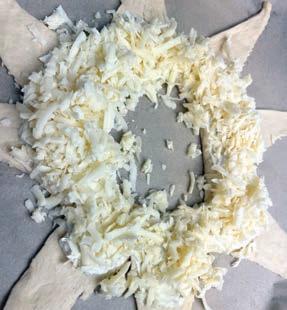
STEP 1: Unroll crescent dough and place in a ring shape on a baking sheet with wide ends touching. Spread with cream cheese on the widest part of the dough.
STEP 2: Sprinkle half of the shredded cheese.
STEP 3: Alternate the ham and turkey.
STEP 4: Spoon on a layer of whole cranberry sauce. Reserve remaining cranberry sauce for garnish in center of ring after baking and/or side dish.
STEP 5 & 6: Sprinkle remaining shredded cheese then pull the pointed end of the crescent dough up and toward the center of the ring securing underneath.
STEP 7: Combine melted butter, half of the thyme and rosemary, and all of the garlic powder, poppy seeds and black pepper. Brush top of crescent dough.
STEP 8: Bake for 20-24 minutes until crescent is golden brown and cheese is bubbly.
STEP 9: Remove from the oven and let cool for 5-8 minutes. Sprinkle top with remaining thyme and rosemary.
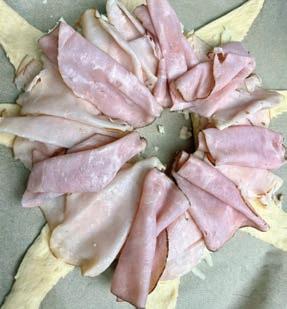
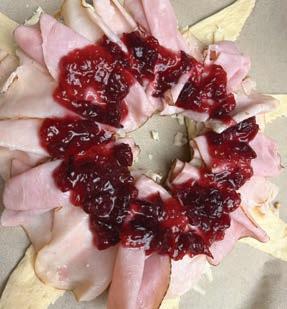




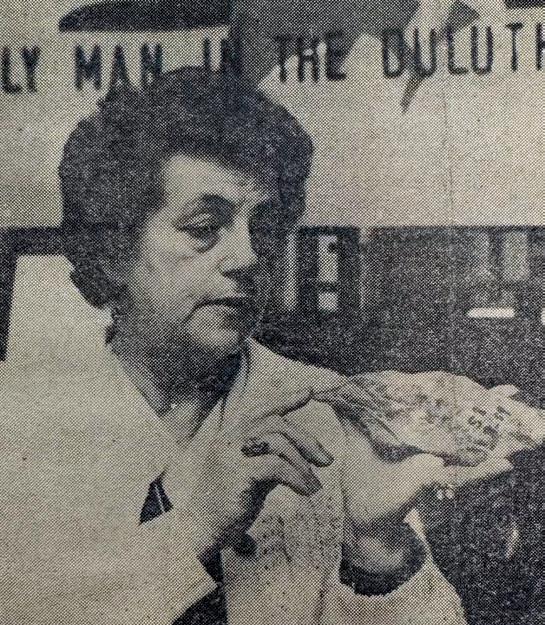
By Amy Carlson
IElaine Redepenning was an archaeologist and writer who was born in Cass Lake, Minnesota, in 1922 and grew up in Virginia, Minnesota, where she was a lifeguard and on the swim team at Roosevelt High School. An “A” student who loved geology, she considered herself an avid rockhound.
In 1945, Redepenning moved to Duluth with her husband, Roland, where her pastime of picking rocks evolved into curating an extensive archeological collection that helped professionals trace early humans to the area.
In 1959, she discovered her first stone tools; she used a local library to conduct her research, and then over the years meticulously cataloged every tool and flake (part of a tool) she found.
Hoping to share her findings, Redepenning reached out to area archaeologists, joined clubs, and attended conventions to no avail. Eventually, archaeologists took note, finding that the Northland was a “megalopolis” about 8,000-10,000 years ago, with around 2,000 people


traveling through it, according to a 2008 article in the Duluth News Tribune.
She co-wrote a 1995 scholarly journal titled “The Paleo-Indian of Southern St. Louis Co. Minnesota: The Reservoir Lakes Complex,” describing the archaeological significance of her collection. She officially named a projectile point she found, calling it the “Duluth Point,” and earned the Hill Lewis Award for archaeology. Redepenning’s collection was on permanent display at the Great Lakes Aquarium, and she was affectionately known as “Doc” throughout the archeological community, despite not having a college degree, according to her 2002 Duluth News Tribune obituary. Redepenning spent a lifetime walking area shorelines and beaches, finding at least 45 sites of archaeological significance. She shared her findings as a gift to all Minnesota children, saying, “Kids today should realize that prehistoric man did live here, not just in Europe or in the West, but right here in St. Louis County,” she told the Duluth News Tribune in 1973. *



